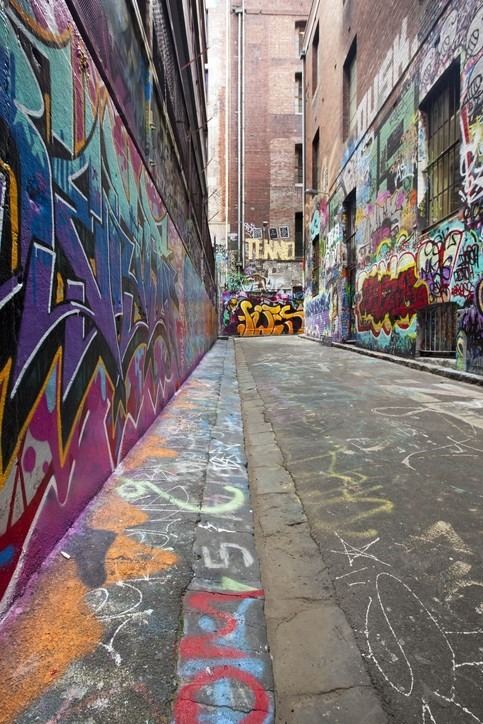Nicknames, Street Names, & Slang For Heroin
When it comes to the production and distribution of both illegal and legal drugs, there are many nicknames and slang terms involved. A lot of these names are influenced by where the drug originated, how they’re made and pop culture. In addition, many of these names are created to present the drug in a way that makes it sound fun or harmless. At the end of the day, there’s an underlying reason drugs are often spoken in code: so that people can talk about it in secrecy.
Like other drugs, there are numerous nicknames that refer to heroin. In this piece you’ll learn not only slang for heroin, but also why it’s important to familiarize yourself with these other names for heroin. Before we dive, let’s take a closer look at what heroin is and how it impacts society.
Overview of Heroin
Heroin is an opioid made from morphine, a natural ingredient from opium poppy plants found in various parts of the world such as Southeast Asia, Colombia and Mexico. In its most raw form, heroin is a fine white powder, but in other cases, it can be found in a brown powder or black sticky substance.
People who use heroin say they get rush of sensation, pleasure and euphoria. They either inject, sniff, smoke or snort heroin and in some cases, users will mix heroin with other drugs. When someone uses heroin, it enters the brain and binds to opioid receptors on cells. These cells influence heart rate, sleeping, breathing and feelings of pain and pleasure.
Heroin is highly addictive and people who consistently use it put themselves in danger as they often develop a tolerance for it, which means they need higher or frequent doses of the drug to get the effects they want. In more serious cases, a heroin addict may experience heart problems or heart failure. In addition, they often make heroin a priority in their life, which results in neglecting other aspects of their life such as work, school and social life.
The Heroin Epidemic
The use of heroin has been increasing in recent years across a wide variety of demographics. Here is a rundown of quick facts about heroin usage outlined by the Centers for Disease Control and Prevention (CDC):
Some of the greatest increases of heroin usage recently occurred in groups that historically have low rates using the drug. These groups include women, the privately insured and people with higher incomes.
- In 2017, about 494,000 people in the U.S. who were 12 years or older said they used heroin in the past year.
- In 2015, there was an estimated 81,000 emergency room visits for unintentional, heroin-related poisonings in the U.S.
- In 2013, more than 90 percent of people who used heroin also said they used at least one other drug.
- From 2000 to 2013, about 75 percent of new heroin users said they abused prescription opioids before using heroin.
Below is also a summary of bullets that outline why heroin is a dangerous drug:
Heroin is a highly addictive illegal drug that commonly leads to overdose. When overdose occurs, it causes slow and shallow breathing, coma and death.
- People often use heroin with other substances, which increases the chances of overdose.
- When people inject heroin, they put themselves at risk for catching HIV, Hepatitis C and Hepatitis B along with bacterial infections that harm the skin, bloodstream and heart.
Signs of Heroin Use

Heroin is one of the most addictive drugs and a lot of people who use it don’t intend to become addicted. As a result, many people who become addicted may have a distorted perception of reality as they often need to be on heroin to feel normal.
It can be difficult to detect when someone is addicted to heroin as many of these users are good at concealing their usage. Below are common signs of heroin substance use disorder:
- Bloodshot eyes
- Changes in appearance
- Constricted pinpoint pupils
- Extreme drowsiness
- Financial problems and borrowing money
- Lack of motivation
- Secretive behavior
- Sudden weight loss
The challenge is that these signs may not be noticeable during early stages of heroin use or addiction. What makes it even more challenging is that there are many different names associated with heroin to keep discussion about the drug under the table. Let’s take a closer look at other names for heroin.
Common Names for Heroin
Dragon. Smack. Horse. These are words that seem harmless at first glance, but what you may not know is that these are terms that refer to heroin.
These slang terms evolve as drug dealers and users need new code names to talk about the drug without family, friends and law enforcement authorities knowing. Since these names for heroin change rapidly over time, it can be difficult to recognize alternative terms people use to refer to the drug. Here are a few other common names for heroin:
- Big H
- Black
- Black Eagle
- Black Pearl
- Black Stuff
- Black Tar
- Boy
- Brown
- Brown Crystal
- Brown Rhine
- Brown Sugar
- Brown Tape
- Chiba
- Chieva
- China White
- Chiva
- Dope
- H
- He
- Hera
- Hero
- Heron
- Herone
- Junk
- Mexican Brown
- Mexican Horse
- Mexican Mud
- Number 3
- Number 4
- Number 8
- Sack
- Scag
- Scat
- Skunk
- Snow
- Snowball
- Tar
- White
- White Boy
- White Girl
- White Horse
- White Lady
- White Nurse
- White Stuff
Among the aforementioned drugs, alcohol, cocaine and benzodiazepines are some of the most common drugs associated with heroin overdose. Let’s take a closer look at these combinations.
Heroin & Benzodiazepines
As the National Institute of Drug Abuse points out, more than 30 percent of overdoses from opioids like heroin involve benzodiazepines, a type of sedative that is commonly prescribed for anxiety or insomnia. Benzodiazepines, commonly known as benzos, calm or sedate a person by raising the levels GABA, an inhibitory neurotransmitter found in the brain.
Common benzodiazepines include Valium, Xanax and Klonopin. Combining heroin with benzodiazepines is highly dangerous as it slows down breathing. Naloxone, a drug that is used to reverse overdose of heroin, becomes less effective in the case heroin is combined with benzodiazepines. Common side effects of the drug combination include:
- Confusion
- Pinpoint pupils
- Slowed, irregular, depressed or stopped breathing
- Unconsciousness
- Unresponsiveness, either awake or unconscious
Heroin and Alcohol
The Drug Abuse Warning Network estimated that roughly 45,000 emergency department visits in 2009 involved a combination of alcohol and heroin. Heroin and alcohol have similar sedative effects on users and when combined, each substance heightens the effects of the other one. When someone uses alcohol and heroin together, negative effects can occur such as:
- Behavioral changes
- Blackouts
- Coma
- Difficulty concentrating
- Drowsiness
- Loss of coordination
- Memory problems
- Psychological changes
- Respiratory distress
- Slow movements and slow thinking
- Slurred speech
- Suicidal behavior
Heroin and Cocaine
Heroin is commonly mixed with cocaine to limit the unwanted side effects of either drug. Since cocaine can mask the effects of heroin, an overdose is likely to occur because a person may take more heroin than intended.
Essentially, the effects of cocaine may temporarily reverse slower breathing or a depressed heart caused by heroin. However, the effects of cocaine wear off quickly compared to heroin, which means a person would then feel the depressing effects of heroin in full force. Some of the symptoms of using heroin and cocaine at the same time include:
- Anxiety
- Blurred vision
- Chest pain
- Coma
- Confusion
- Drowsiness
- Heart attack
- High blood pressure
- Irregular heartbeat
- Lack of coordination
- Nausea
- Respiratory distress
- Seizures
- Stroke
- Stupor
- Vomiting
 Other Slang Terms Related to Heroin Distribution & Use
Other Slang Terms Related to Heroin Distribution & Use
In addition to names for heroin, there are also other terms used to talk about the use or distribution of heroin in secrecy. Here are a few common terms for both:
- Slang for Heroin Distribution
- Bindles: heroin is typically sold in paper packages, which are known as bindles
- Balloons: heroin may be packaged and sold in balloons to easily conceal the drug when trafficking
- Nickel Bag: $5 worth of heroin
- Dime Bag: $10 worth of heroin
- Twenty: $20 worth of heroin
Slang for Heroin Use
- Chipper: someone who uses heroin on occasion
- Cook: to mix heroin with water and dissolve it as a way to prepare for injection
- Daytime: refers to a heroin high
- Evening: refers to coming down from a heroin high
- Give Wings: inject someone with heroin or teach them how to inject themselves
- Mainlining: refers to the act of injecting heroin into a vein
- Nod: nodding effect caused by heroin
- Rig, Point, Works: needle and syringe used to shoot heroin
- Skin Popping: act of injecting heroin subcutaneously or just under the skin
Why Should You Know These Other Names for Heroin?
While it’s important for law enforcement agencies and police officers to stay up-to-date with the latest names for heroin and other drugs to crack down on drug dealers, it’s also important for everyone to be aware of these slang names to protect their circle of family and friends.
As mentioned, these names for heroin are created so that users can talk about the drug in secrecy so others won’t know. Being aware of alternative names for heroin can help you detect early if someone close to you is abusing heroin. By educating yourself with these terms, you could be voice of reason that helps prevent a loved one from becoming dependent and addicted to heroin.
People who are first introduced to heroin—along with other drugs—often don’t understand the risks and complications that come with using it. If you learned these code names and heard a loved one use it in a way that suggests drug use, you could be the one who can help steer them in the right direction before it’s too late.
Imagine if you’re a parent and your child is talking on the phone talking about “chasing the dragon,” which is a common term to describe using heroin. Would you stop to think they were talking about doing heroin?

